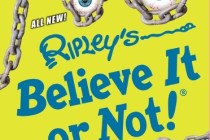‘M is for Money’ packed with pint-size economics lessons
There's a little jingle in your pocket, and you can't wait to spend it.
So what will you buy? Will you purchase candy or a toy? Is there enough for a present for Mom or Grandma? Or after you read "M is for Money: An Economics Alphabet" by Debbie and Michael Shoulders, illustrated by Marty Kelley, and learn a little more, will you put the jingle in your bank?
Why do we even have money? The answer starts with farmers …
About 10,000 years ago, when humans decided to stay in one place and grow crops, someone eventually had an (A for) Abundance. In their little (C for) Civilization, then, they were able to trade crops for food and other items. Because it's kind of hard to carry a bushel of grain in your pocket, money was created as a stand-in.
This all has to do with (E for) Economics, which is "the study of how we get things we want and need," how bartering works, and how businesses operate. It's "the way people obtain items that may be scarce or in-demand."
Let's say you have (G for) Goods and Services, like lemonade and brownies to sell. The kid next door is selling milk and cookies. You can lower your price to attract customers, but you'll want (I for) Income from your lemonade and brownies, so you won't want to sell too cheaply. On the other hand, you can raise prices if it's a hot day, and people are hungry. The kid next door can do the same, if she wants — which is a basic definition of a (F for) Free Market.
So what do you do if you want more (M for) Money?
You can ask your family, friends and neighbors to pay you for special chores, which makes you a (P for) Producer. You can cut your (S for) Spending, and put your money away for interest, which you get when your bank makes a (L for) Loan to someone. You could try making something at home out of the (R for) Resources you already have, and you'll have (Z for) Zero Profit Condition.
Or you could just ask for a bigger allowance. How easy is that?
As a parent, that's a question you have: How easy should it be to explain economics to a child who knows what money is? The answer is inside "M is for Money."
Starting at the earliest possible point, the authors give kids thorough lessons on supply and demand, housing markets, quotas, taxes and other facets of economics in a way they'll understand — particularly if you're around to help fill in the blanks they may still have. It might fill in the blanks that you have, too.
Though this book may seem like it's meant for small children (and the illustrations support that), the concepts here could be quite advanced for them. No, "M is for Money" is best for 8- to 11-year-olds. Those are the kids who'll want to spend time with it.
— View publishes Terri Schlichenmeyer's reviews of books for children and teens weekly.
About the book
“M is for Money: An Economics Alphabet” by Debbie and Michael Shoulders, illustrated by Marty Kelley
Sleeping Bear Press, c. 2015, 32 pages
$16.99/$17.99 Canada























